Livestock for Livelihoods- Priorities for livestock development in Karamoja, Uganda
Feed the Future
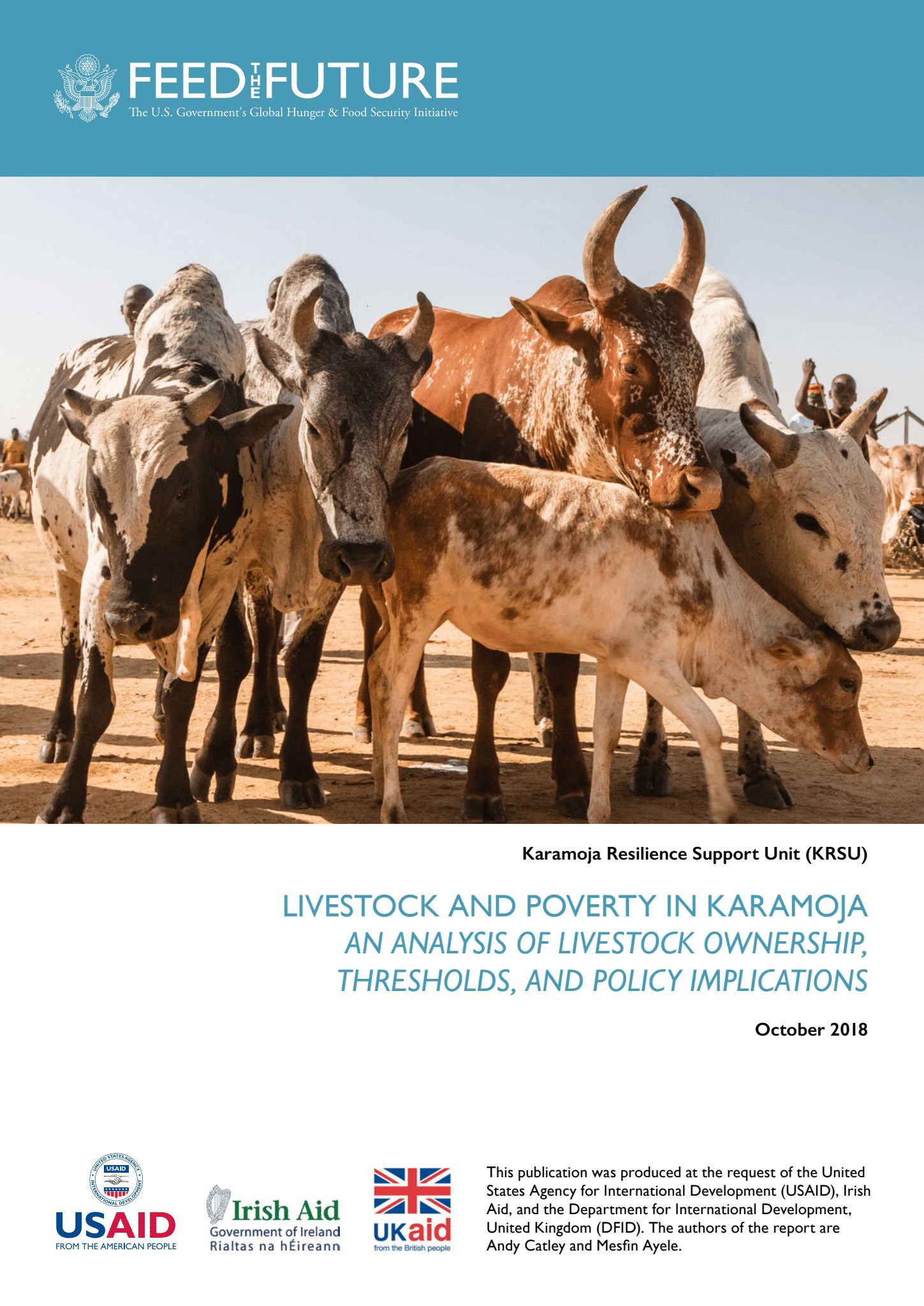
LIVESTOCK AND POVERTY IN KARAMOJA AN ANALYSIS OF LIVESTOCK OWNERSHIP, THRESHOLDS, AND POLICY IMPLICATIONS
In pastoralist and agro-pastoralist households in East Africa, livestock not cash are usually the main financial asset. Animals are sold to buy grain and to meet other domestic needs, and animals also provide food, especially milk, for direct human consumption.
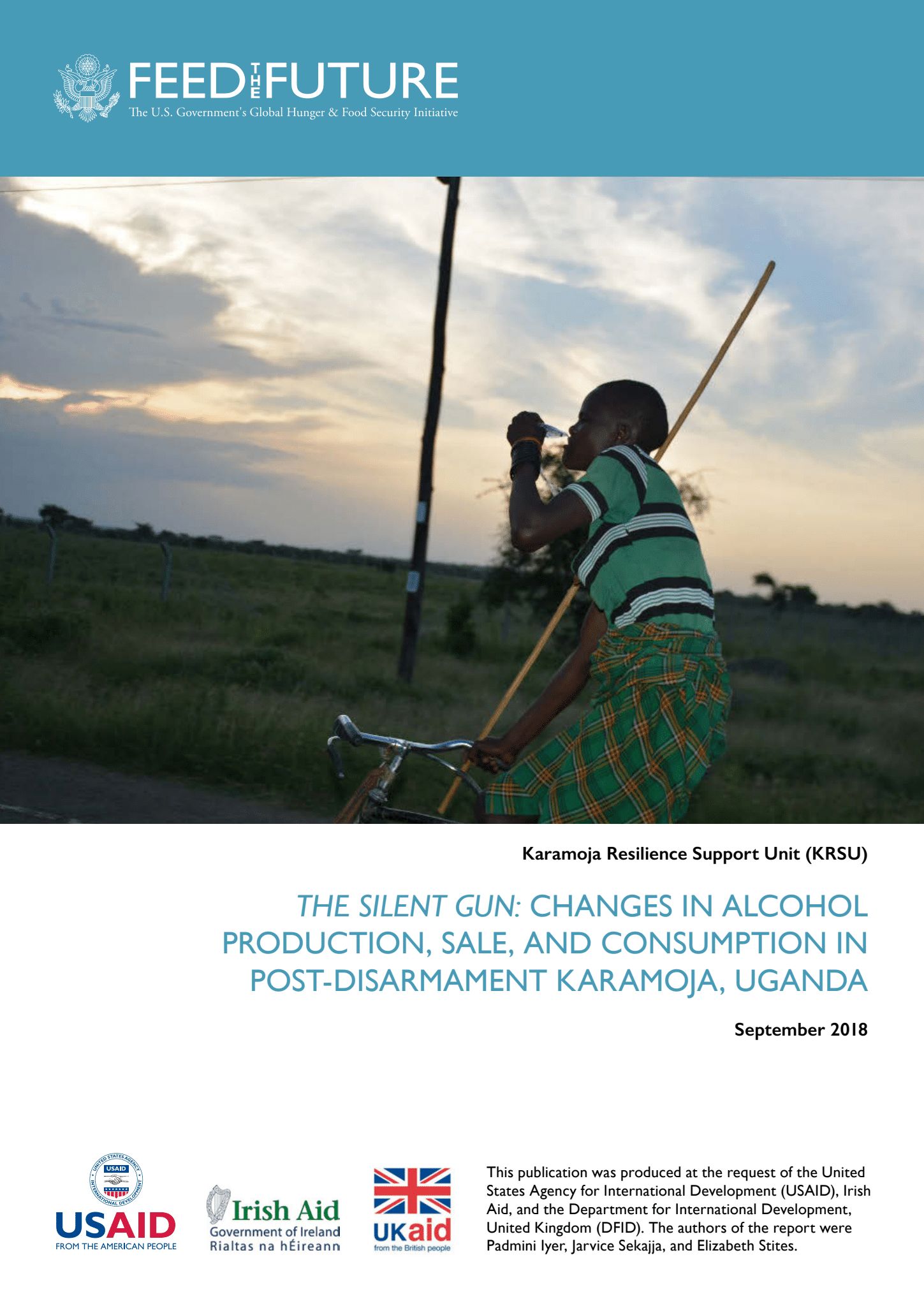
THE SILENT GUN: CHANGES IN ALCOHOL PRODUCTION, SALE, AND CONSUMPTION IN POST-DISARMAMENT KARAMOJA, UGANDA
Research and observations over the past decade have pointed to the high prevalence of alcohol use in Karamoja. Brews made locally of sorghum and maize have sociocultural, nutritional, and economic significance.
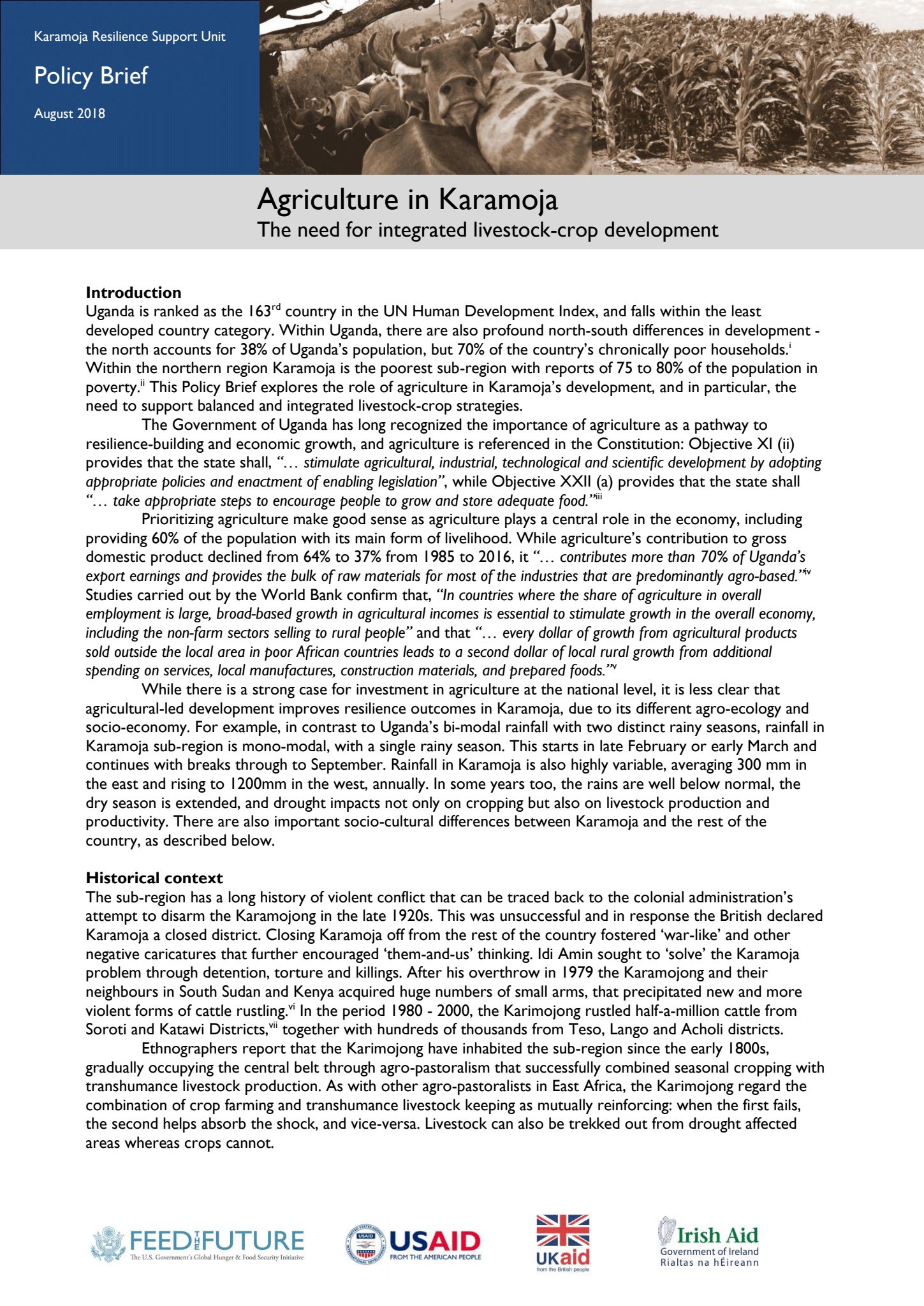
Agriculture in Karamoja-The need for integrated livestock-crop development
This Policy Brief explores the role of agriculture in Karamoja’s development, and in particular, the need to support balanced and integrated livestock-crop strategies.
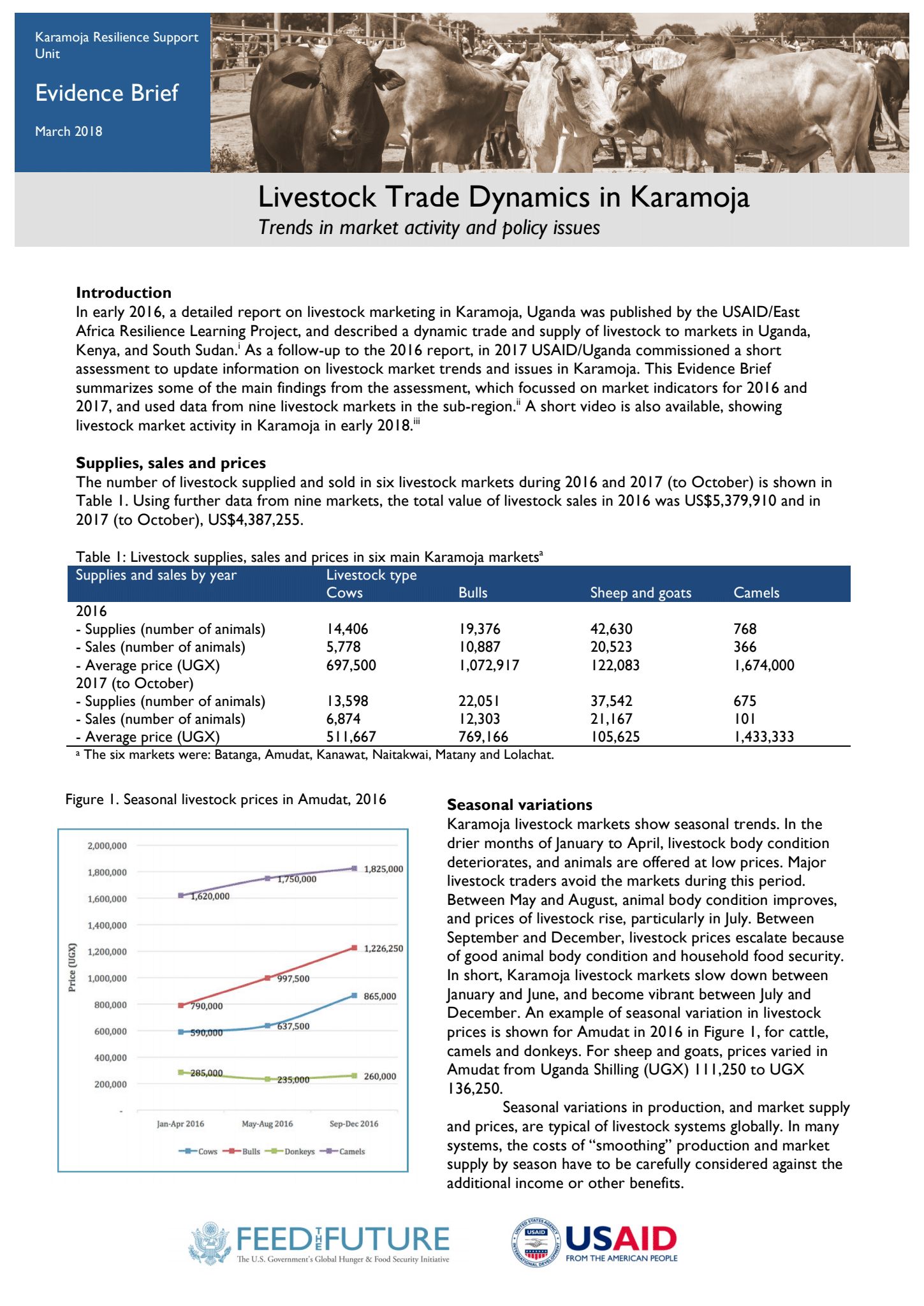
Livestock Trade Dynamics in Karamoja-Trends in market activity and policy issues
In early 2016, a detailed report on livestock marketing in Karamoja, Uganda was published by the USAID/East Africa Resilience Learning Project, and described a dynamic trade and supply of livestock to markets in Uganda, Kenya, and South Sudan. As a follow-up to the 2016 report, in 2017 USAID/Uganda commissioned a short assessment to update information on livestock market trends and issues in Karamoja.
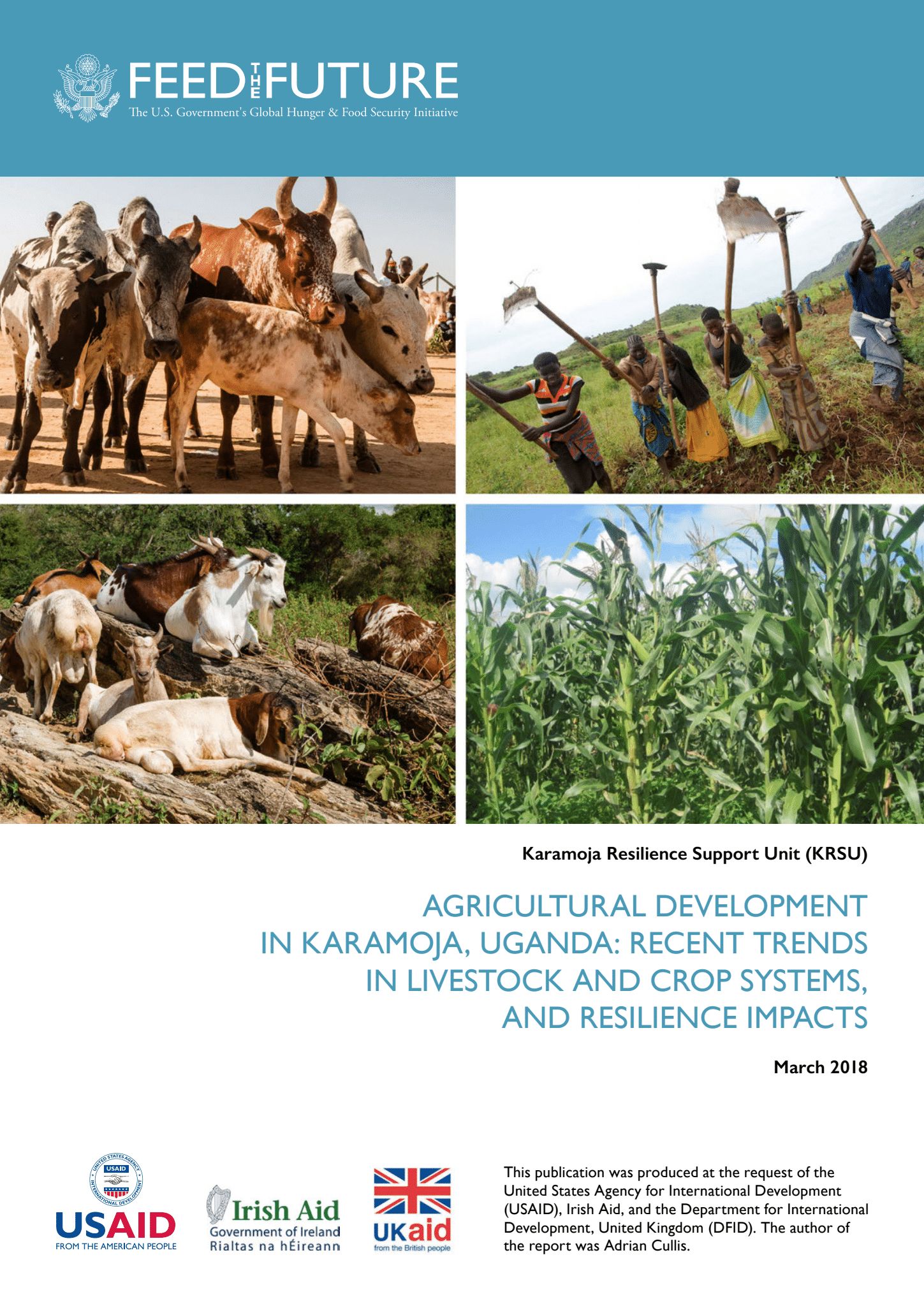
AGRICULTURAL DEVELOPMENT IN KARAMOJA, UGANDA: RECENT TRENDS IN LIVESTOCK AND CROP SYSTEMS, AND RESILIENCE IMPACTS
This report is a review of agricultural development trends in the Karamoja sub-region of northeast Uganda. The review covered both crop farming and transhumance livestock management and examined agriculture at the levels of both policy and programming.

Livestock Trade Dynamics in Karamoja
In early 2016, a detailed report on livestock marketing in Karamoja, Uganda was published by the USAID/East Africa Resilience Learning Project, and described a dynamic trade and supply of livestock to markets in Uganda, Kenya, and South Sudan.
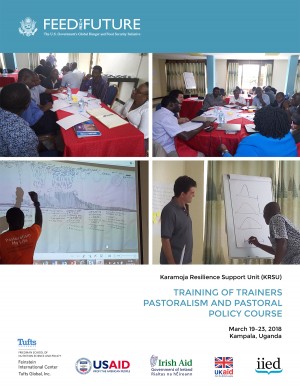
Training of Trainers Pastoralism and Pastoral Policy Course (One)
The Karamoja Resilience Support Unit (KRSU), in partnership with the International Institute for Environment and Development (IIED), commissioned the adaptation and roll-out of the East African Pastoralism and Policy Course (PPC) and has completed the final training of trainer’s (ToT) course.
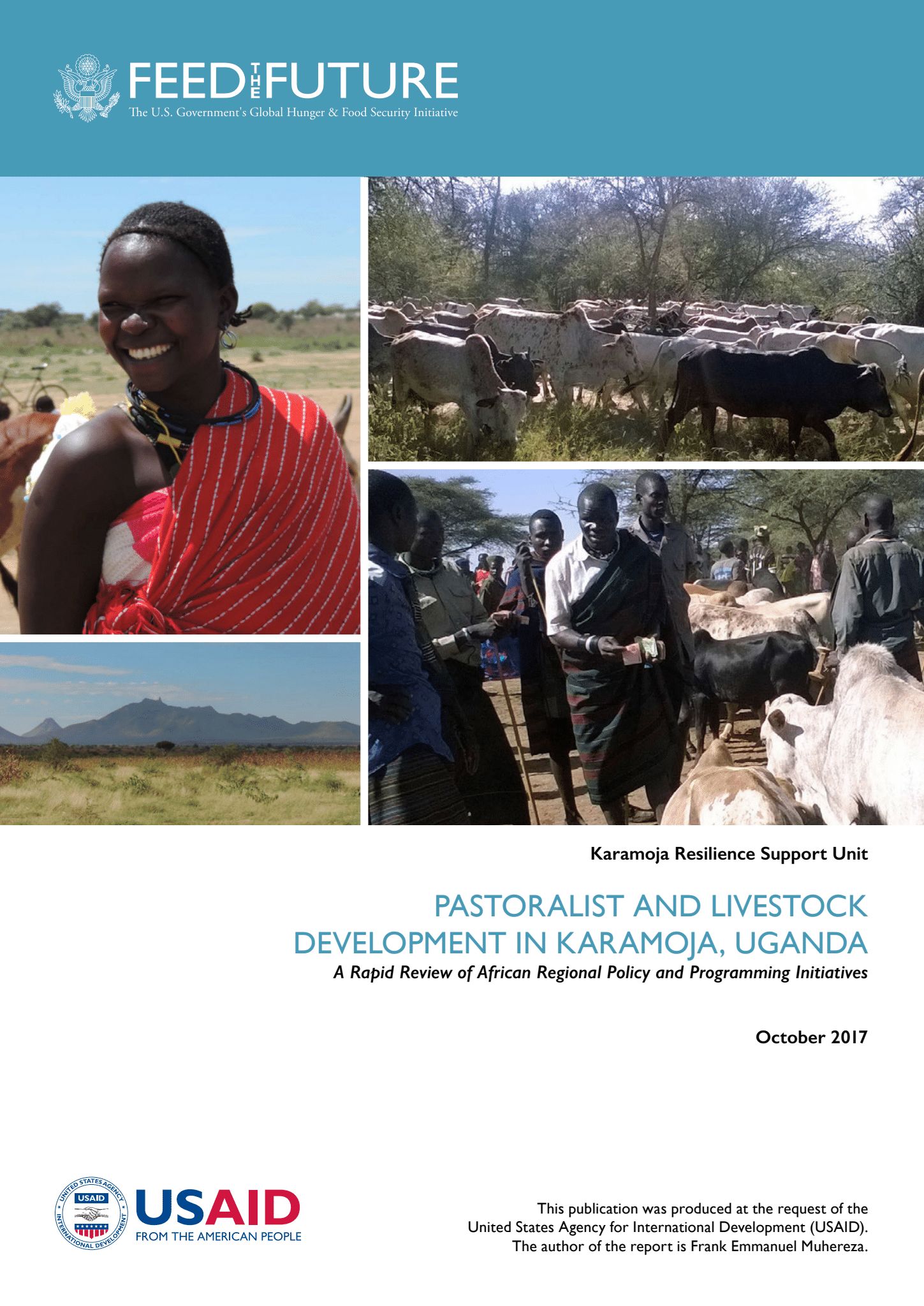
PASTORALIST AND LIVESTOCK DEVELOPMENT IN KARAMOJA, UGANDA
This review examines regional policies and programming initiatives in East Africa and the Horn of Africa related to pastoral areas development, and their relevance to the Karamoja Region of Uganda.
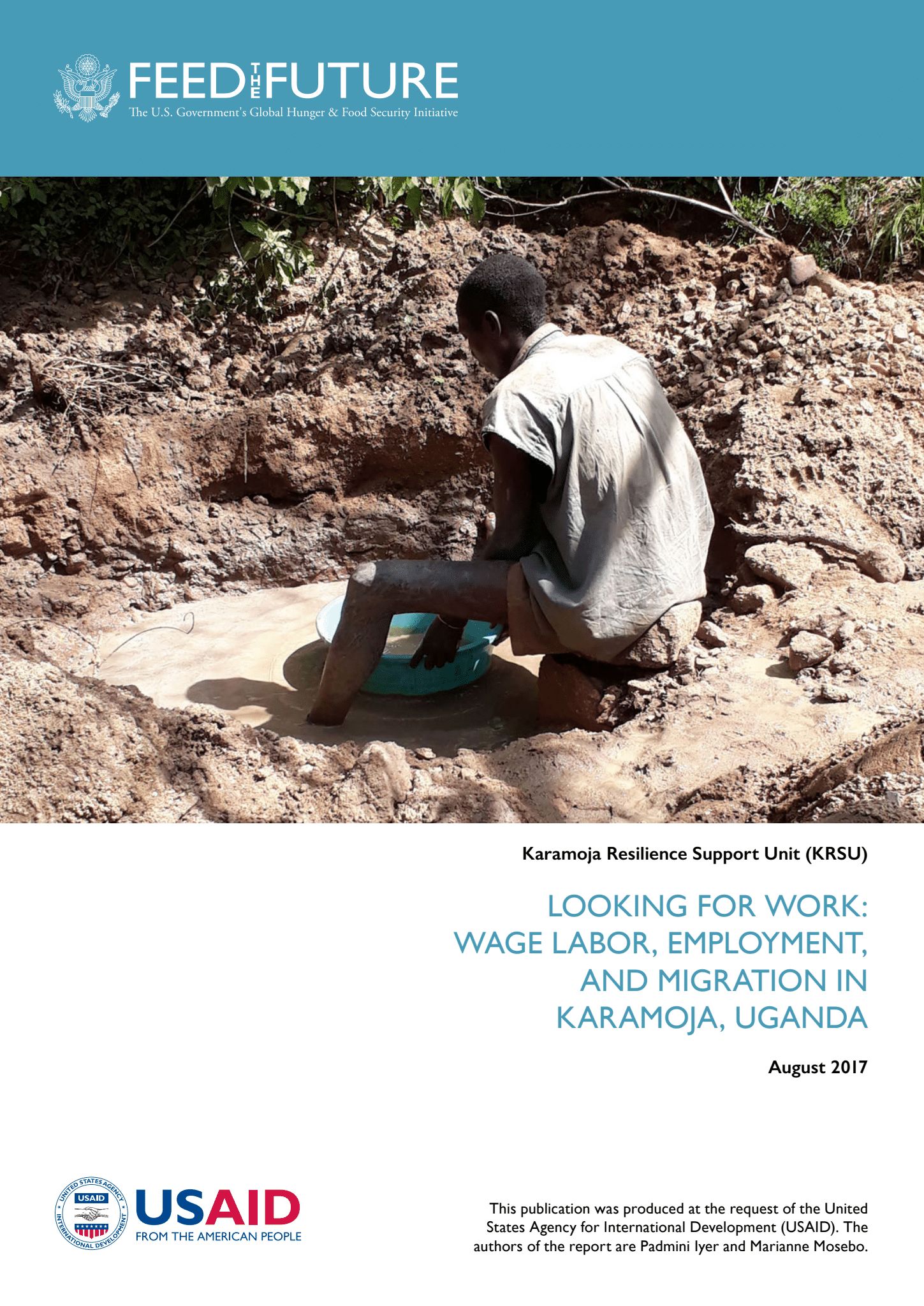
LOOKING FOR WORK: WAGE LABOR, EMPLOYMENT, AND MIGRATION IN KARAMOJA, UGANDA
The main purpose of this assessment is to document and analyze trends in labor and employment in the non-pastoral labor sectors within and outside Karamoja, and to investigate how individual- and macrolevel factors influence participation in the labor market.
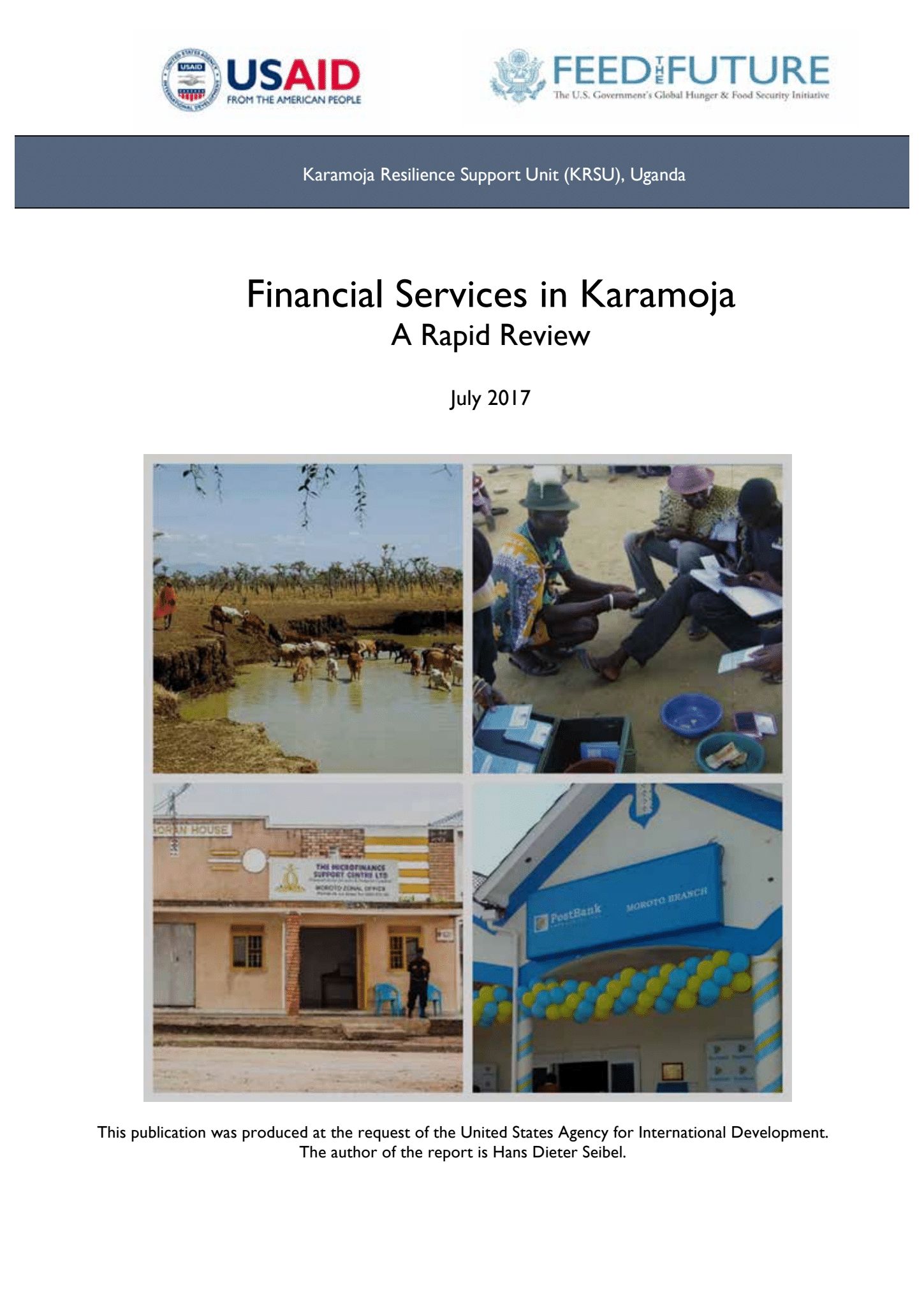
Financial Services in Karamoja A Rapid Review
The review is an initial exploratory and rapid assessment of financial services in the region and was conducted over a short time frame. The aim to flag issues for more detailed analysis and follow up, rather than being a comprehensive study on financial services.
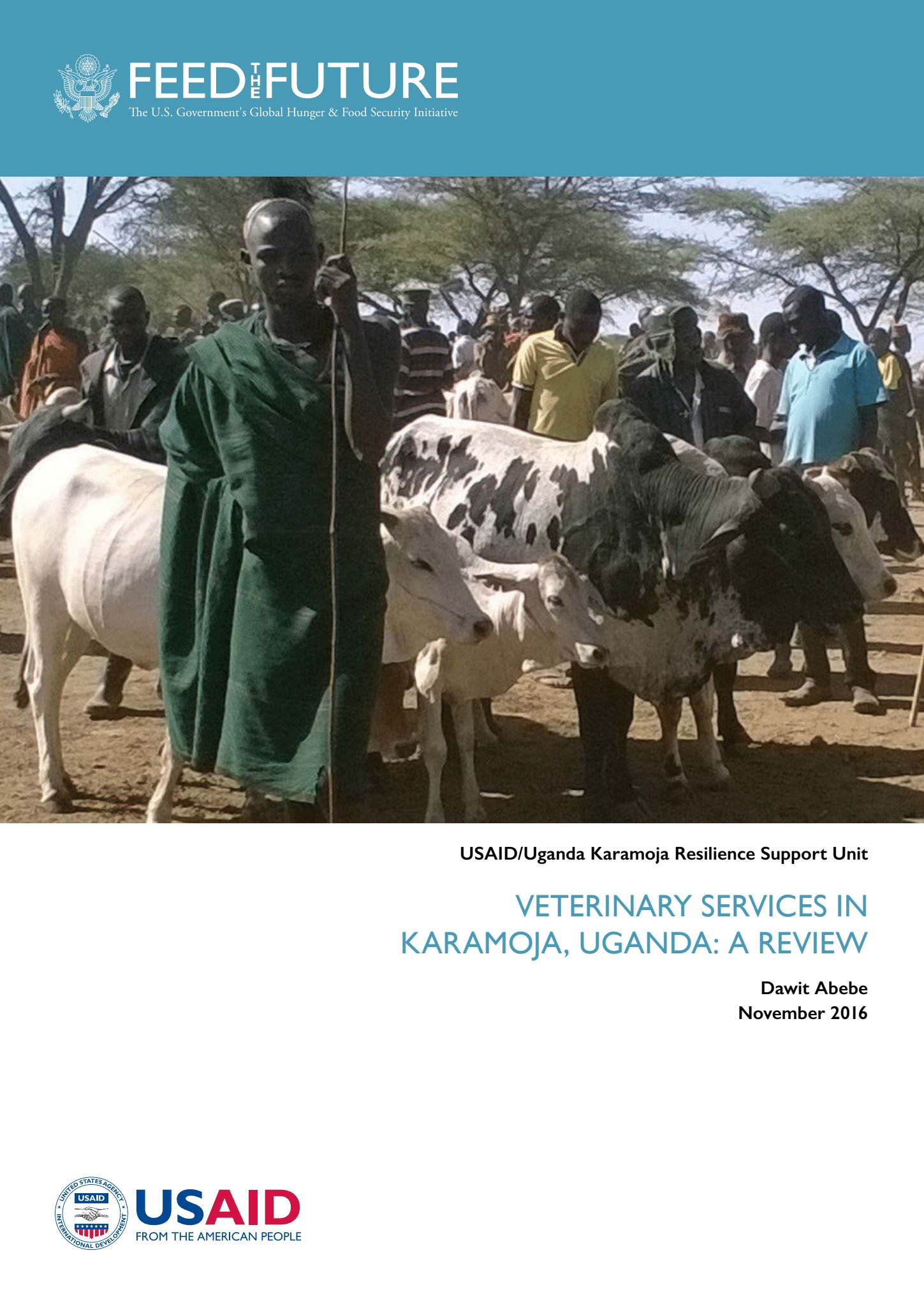
VETERINARY SERVICES IN KARAMOJA, UGANDA: A REVIEW
This aim of this report is to document the experiences of veterinary service delivery in Karamoja and draw lessons to guide a strategy for future service provision, aligned to Uganda’s animal health policies and legislation.
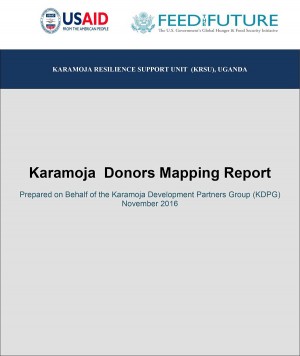
Karamoja Donors Mapping Report
A mapping of 2017 funds to Karamoja from 10 major bilateral and multilateral donors. Additional Information This donor mapping exercise has been compiled by the USAID supported Karamoja Resilience Unit (KRSU), on behalf of the KDPG. This is the second year that the KDPG has produced this mapping exercise. This year it is estimated that these 10 donors will provide €89 million (approx. 380 billion Ugx) during 2017. The analysis provided in this report (see Section 2) demonstrates that this funding is provided across all sectors with a particular focus on the basic service delivery (KIDP strategic objective 1) and food security (KIDP strategic objective 6).
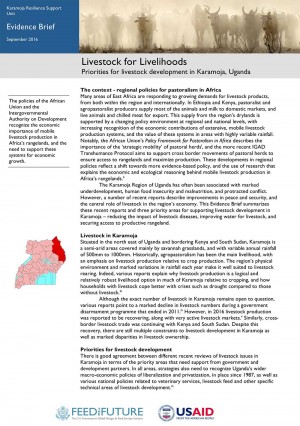
Livestock for Livelihoods- Priorities for livestock development in Karamoja, Uganda
Many areas of East Africa are responding to growing demands for livestock products, from both within the region and internationally. In Ethiopia and Kenya, pastoralist and agropastoralist producers supply most of the animals and milk to domestic markets, and live animals and chilled meat for export. This supply from the region’s drylands is supported by a changing policy environment at regional and national levels, with increasing recognition of the economic contributions of extensive, mobile livestock production systems, and the value of these systems in areas with highly variable rainfall.
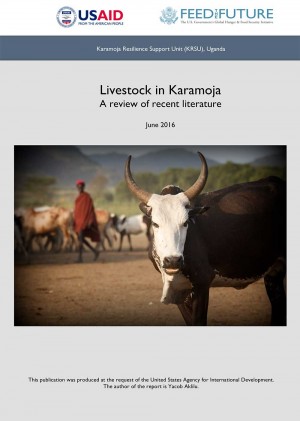
Livestock in Karamoja: A review of recent literature
The review synthesizes the main issues impacting livestock production in the region and identifies critical factors affecting livestock production. This review is drawn largely from the literature produced during the last five years on Karamoja generally, and more specifically on the livestock sector in Karamoja. Additional information was obtained through interviews in Kampala and Moroto with Government and NGO staff in April and May 2016.
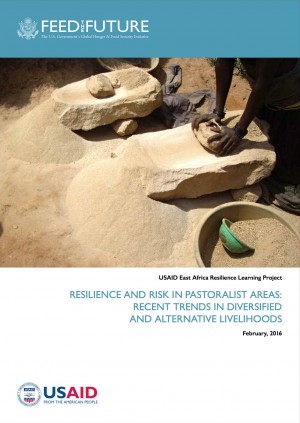
Livelihood diversification trends, risks, and programming implications
This study explored recent trends in diversification by East African pastoralists, the factors that drive their choices, and the potential short and longer-term consequences of their decisions. It considered the risks and costs of diversified and alternative livelihoods, as well as the benefits. The report presents findings from three case studies from Karamoja in northeastern Uganda, the Borana region of southern Ethiopia, and the Garissa District of northeastern Kenya. It includes policy recommendations regarding land tenure, local value addition around livestock production, and investments in sustainable natural products, local infrastructure, and urban/peri-urban planning. Further recommendations address nutritional issues, the promotion of regional trade, and growing demands for education, training, and business development skills.
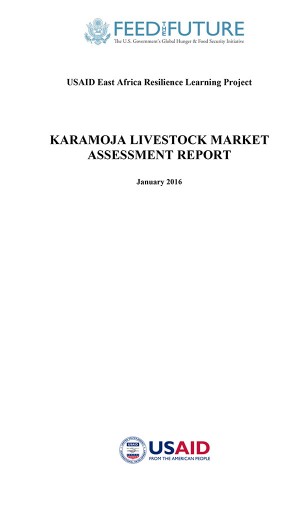
Karamoja Livestock Market Assessment Report
This report presents an analysis of livestock marketing in the Karamoja region of north-east Uganda. This assesment reviews the current status of livestock marketing and trade in Karamoja, including cross-border trade with Kenya and South Sudan. The assessment explains the economic logic of herd growth in Karamoja as a means to build household financial capital, and questions the notion of Karamojong herders as unresponsive to price and opportunity. The assessment reports a practice of 'trading up' in which bulls are fattened and exchanged for heifers, as well as a dynamic livestock market activity in Karamoja. Key constraints to livestock production are highlighted - weak veterinary services and problems with livestock water supply.